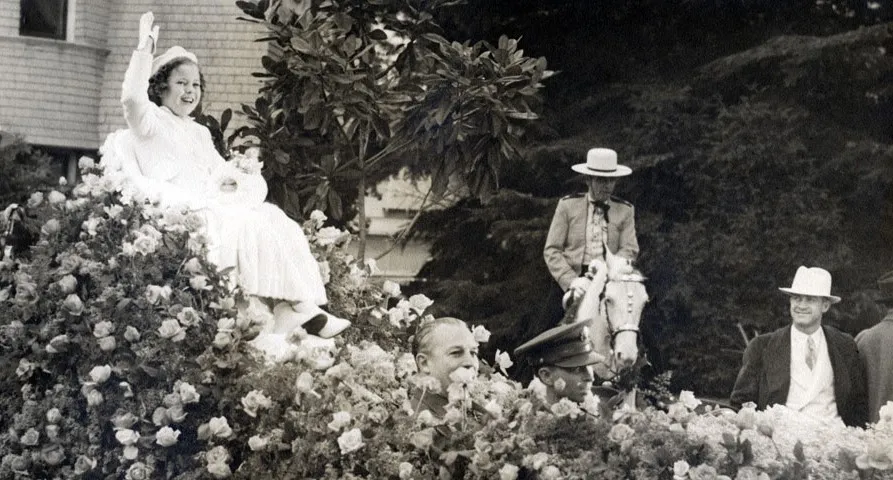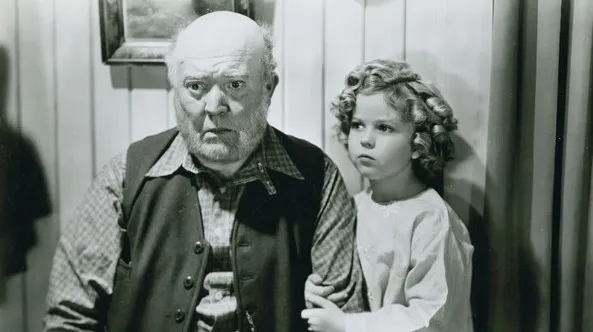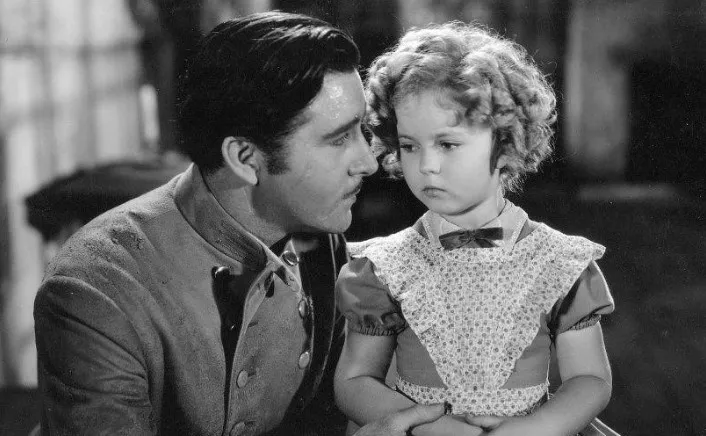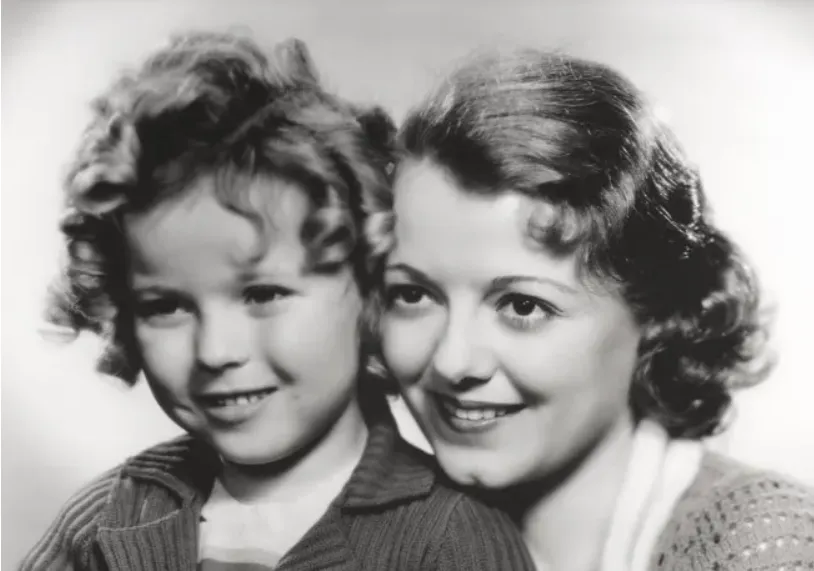Shirley Temple, the cherubic child star who captured the hearts of millions during the Great Depression, made an indelible mark on Hollywood with her captivating performances. Among her many successful films, The Littlest Rebel (1935) stands out as a testament to her talent and the cultural impact she had during a challenging time in American history. This film, a blend of historical drama and musical charm, remains a significant piece in the tapestry of Shirley Temple's illustrious career.
The Rise of Shirley Temple: America's Darling

By 1935, Shirley Temple was already a household name. Born on April 23, 1928, in Santa Monica, California, Shirley’s journey to stardom began at the tender age of three. With her golden curls, dimples, and undeniable charisma, she quickly became a symbol of hope and joy during the economic hardships of the 1930s. Audiences flocked to theaters to see her films, drawn by her infectious optimism and the lightheartedness she brought to the screen.

Shirley Temple’s films were more than just entertainment; they were a balm for the weary souls of a nation struggling to find its footing. Her movies often featured her overcoming adversity with a smile and a song, and The Littlest Rebel was no exception.
The Littlest Rebel: A Story of Innocence Amidst Conflict

Released in 1935, The Littlest Rebel was directed by David Butler and was based on a 1911 play by Edward Peple. The film is set during the American Civil War and tells the story of Virgie Cary, a young girl living in the South, who is played by Shirley Temple. Virgie’s father, Captain Herbert Cary (portrayed by John Boles), is a Confederate officer, and the film revolves around the trials and tribulations that Virgie and her family face during the war.

The film opens with Virgie living an idyllic life on her family’s plantation. Her world is turned upside down when her father leaves to fight in the war, and soon after, their home is destroyed by Union forces. Virgie and her father become fugitives, trying to evade capture while also seeking help from President Abraham Lincoln to secure a pardon for her father.

The plot of The Littlest Rebel is both heartwarming and heart-wrenching. It explores themes of loyalty, love, and the innocence of childhood amidst the brutal realities of war. Shirley Temple’s portrayal of Virgie is nothing short of remarkable. She embodies the spirit of a child who refuses to give up, even when the odds are stacked against her.
Shirley Temple’s Performance: The Heart of the Film

At the center of The Littlest Rebel is Shirley Temple’s performance, which is the driving force behind the film’s enduring appeal. At just seven years old, Shirley demonstrated an uncanny ability to convey complex emotions with a natural ease that belied her age. Her performance in The Littlest Rebel is a masterclass in how a child actor can carry a film with a combination of charm, vulnerability, and sheer talent.

One of the most memorable aspects of Shirley’s performance in The Littlest Rebel is her ability to transition seamlessly between moments of lightheartedness and deep emotional intensity. In one scene, Virgie is seen joyfully dancing and singing, her face lit up with the pure delight that only a child can exude. In the next, she is dealing with the harsh realities of her family’s situation, her face reflecting the weight of the world on her young shoulders.

Shirley Temple’s ability to connect with the audience on such a profound level is what made her a star. In The Littlest Rebel, she doesn’t just play a character; she becomes Virgie Cary, and in doing so, she brings the audience along on her emotional journey.
The Music of The Littlest Rebel

Music played a significant role in Shirley Temple’s films, and The Littlest Rebel was no exception. The film features several musical numbers that showcase Shirley’s singing and dancing talents, further endearing her to the audience.
One of the standout musical moments in the film is the song "Polly Wolly Doodle," a traditional folk tune that Shirley performs with her trademark enthusiasm. Her rendition of the song is infectious, and it perfectly captures the innocence and joy that her character brings to the screen, even in the face of adversity.

The film also features a touching duet between Shirley Temple and Bill "Bojangles" Robinson, who plays Uncle Billy, a loyal servant to the Cary family. Their dance together is a highlight of the film, showcasing not only their individual talents but also the chemistry they shared on screen. Robinson, a legendary tap dancer, and Shirley Temple created a memorable and groundbreaking partnership, as they were one of the first interracial dancing pairs to be featured prominently in Hollywood.
Cultural Significance and Controversy

While The Littlest Rebel was a box office success and further solidified Shirley Temple’s status as a major star, it is also a film that reflects the complexities of its time. The film’s portrayal of the Civil War, race relations, and the romanticized view of the Old South are aspects that have been scrutinized in modern times.
It’s important to acknowledge that The Littlest Rebel, like many films of its era, contains elements that are problematic by today’s standards. The portrayal of African American characters and the depiction of slavery are particularly contentious issues. While the film was a product of its time, it serves as a reminder of how cultural perceptions have evolved and how important it is to view historical films through a critical lens.

Despite these controversies, The Littlest Rebel remains a significant part of Shirley Temple’s legacy. The film’s success at the box office and its lasting impact on audiences are a testament to Shirley’s star power and the appeal of her on-screen persona.
The Legacy of The Littlest Rebel

The Littlest Rebel is more than just a film; it’s a piece of cinematic history that continues to be studied and appreciated by film enthusiasts and historians alike. Shirley Temple’s performance in the film is a shining example of why she became one of the biggest stars of her generation.
The film’s legacy is also tied to the impact that Shirley Temple had on American culture. At a time when the country was in the grips of the Great Depression, Shirley Temple’s films provided a much-needed escape for audiences. Her cheerful demeanor and unwavering optimism were a beacon of hope during some of the darkest days of the 20th century.

Even today, decades after her rise to stardom, Shirley Temple remains an enduring symbol of childhood innocence and joy. The Littlest Rebel is a key part of her body of work, showcasing the qualities that made her a beloved figure in Hollywood and around the world.
The Littlest Rebel (1935) is a film that highlights the talent and charm of Shirley Temple, one of the most iconic child stars in Hollywood history. Her performance as Virgie Cary captured the hearts of audiences and solidified her place in the pantheon of cinema greats. Despite the film’s controversial aspects, it remains an important part of Shirley Temple’s legacy and a testament to her ability to bring light and joy to the silver screen.

As we look back on Shirley Temple’s career, The Littlest Rebel stands out as a film that encapsulates the magic she brought to the movies. Her legacy as a symbol of hope, resilience, and pure entertainment continues to inspire new generations, ensuring that Shirley Temple’s star will never fade.



